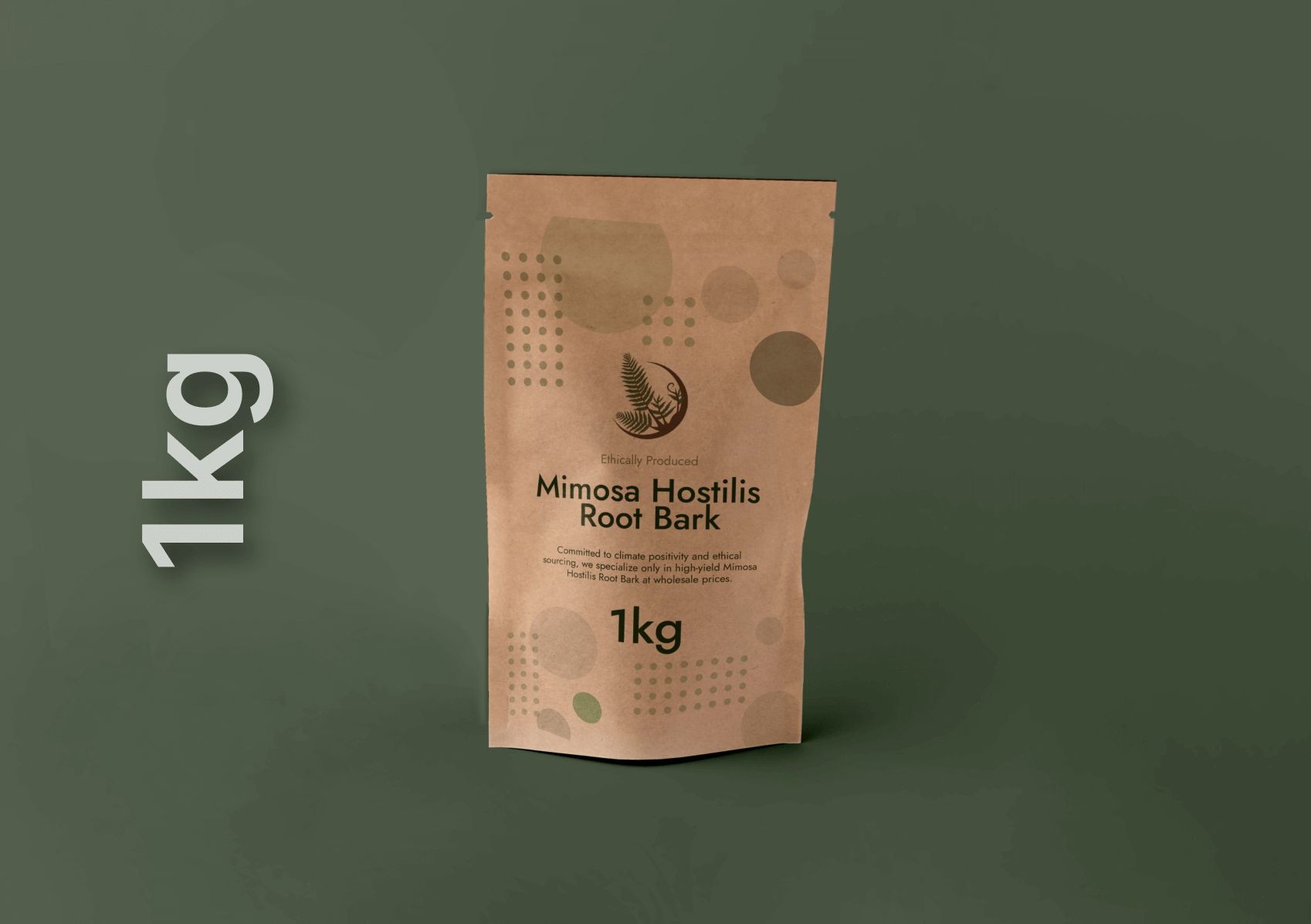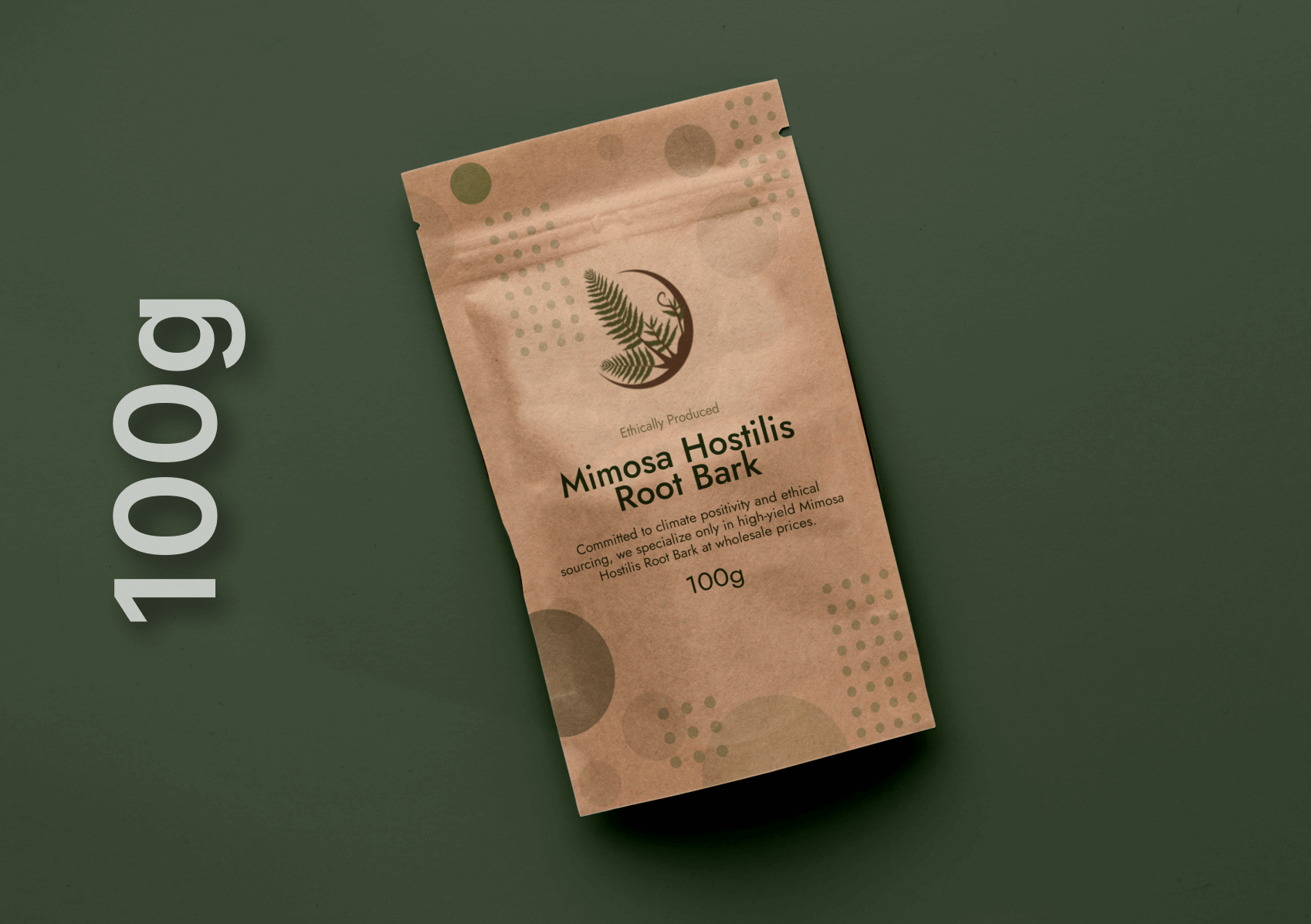The Jurema Preta (Mimosa tenuiflora) plant, a key component of South American indigenous ethnobotany, has been all but forgotten outside isolated communities. Now, in recent years, this botanical wonder is enjoying a strong resurgence. From ritual use to innovative wellness products, Jurema Preta is reasserting its role in traditional practices and new markets alike. In this in-depth article, we look into the complex history, botanical features, cultural importance, and the new commercial potential of Jurema Preta.
Roots of Jurema Preta Usage
Indigenous Traditions and Ritual Contexts
For centuries, several indigenous communities in Brazil—particularly in the Northeast—have revered Jurema Preta for its psychoactive and medicinal properties. The Tupi-Guarani and Pataxó tribes employed the bark in ritualistic brews called “Vinho da Jurema.” Shamans used Jurema Preta’s transformative effects, through meticulously planned ceremonies, to guide spiritual journeys, foster communal healing, and ground ancestral wisdom.
- Spiritual Ecology: The Jurema Preta tree is considered a portal to the spiritual world. Traditional shamans, or “pajés,” thought that by drinking decoctions made from its bark, they could communicate with the spirits of ancestors, promoting guidance for tribal decisions.
- Cultural Narratives: Traditional oral traditions tell of heroic individuals who received supernatural wisdom after being exposed to Jurema Preta. These stories highlight the plant’s deeply entrenched status as a “teacher” and “healer.”
Colonial Suppression and Near-Obsolescence
In spite of its cultural significance, Jurema Preta use was marginalized throughout colonial and post-colonial periods. European missionaries considered the plant’s rituals to be pagan practices, and hence they followed systematic suppression:
- Legal Prohibitions: From the 16th and 17th centuries, colonial governments prohibited indigenous ceremonies using Jurema Preta in an effort to remove native belief systems.
- Cultural Displacement: Missions and forced relocations destroyed traditional custodial lineages, leading the Jaruma Preta tradition to fall into secretive practice.
By the 20th century, mass criminalization of psychoactive plants pushed Jurema Preta into obscurity, except for a few secretive groups holding on to ritual information.
Botanical Profile of Jurema Preta
Taxonomy and Geographic Distribution
Jurema Preta (Mimosa tenuiflora) is a member of the Fabaceae family, which has the ability to fix nitrogen. Major botanical points are:
- Native Habitat: The Caatinga biome of Northeastern Brazil, which spans states like Bahia, Ceará, and Pernambuco.
- Growth Conditions: Excels in arid and semi-arid conditions, with remarkable tolerance to drought. In fact, Jurema Preta tends to thrive where other species die, due to its deep root system.
Morphological Characteristics
- Height and Canopy: Mature trees average 3–5 meters in height, with a densly bushy canopy that offers great shade.
- Leaves: Pinnate leaves, 8–20 cm in length, with many small leaflets which close upon contact—a defense mechanism common among many Mimosa species.
Flowers and Seeds: Creamy-white, filamentous flower clusters occur at the rainy season (December to March). The flat leguminous pods that contain multiple seeds mature in 30–40 days, allowing for quick propagation.
Phytochemical Constituents and Pharmacological Potentials
Alkaloids and Tryptamines
N,N-Dimethyltryptamine (DMT), a strong tryptamine with the ability to induce profound visionary experience, is the major active substance found in Jurema Preta. Other alkaloids and flavonoids support the multifaceted biochemical profile of the plant:
- Tannins: Impart antimicrobial and healing effects to Mimosa root bark, classifying it as an effective topical therapy for dermatological lesions and infections.
- Saponins and Flavonoids: Anti-inflammatory and antioxidant effects promote cardiovascular well-being and reduce oxidative pressure.
Traditional Medicinal Uses
- Antiseptic and Dermatological Therapies: Traditional healers have utilized bark poultice therapy for centuries to counteract burns, ulcers, and rashes. Modern research validates such uses, crediting high tannin content for healing effectiveness.
- Gastrointestinal Relief: Bark decoctions of Jurema Preta have traditionally been used to cure dysentery, diarrhea, and gastric ulcers. Contemporary pharmacological assays validate its antimicrobial action against typical pathogens, supporting its use in gastrointestinal ailments.
- Spiritual and Psychotherapeutic Uses: Not only physical recovery but also psycho-spiritual health is facilitated by decoctions of Jurema Preta. Anecdotal evidence indicates possible relief from trauma, as well as increased emotional resilience. This aspect is quickly gaining popularity among integrative mental health practitioners.
The Modern Resurgence of Jurema Preta
Renewed Interest in Ethnobotanical Research
In the last decade, global attention to plant-based medicine has surged, triggering renewed interest in forgotten pharmacopoeias. Mimosa hostilis stands out due to its under-explored yet potent psychoactive profile:
- Academic Research: Universities in Brazil and abroad have initiated field studies, documenting traditional knowledge systems and conducting phytochemical analyses. Early-stage clinical trials are exploring Jurema Preta’s role in treating treatment-resistant depression and post-traumatic stress disorder (PTSD).
- International Meetings: Ethnobotanists, pharmacologists, and anthropologists meet at conferences such as the “International Congress on Psychedelic Therapies” to exchange information. Reports on Jurema Preta highlight its safety profile, beneficial pharmacokinetics, and relative strengths compared to other entheogenic plants.
Commercial and Legal Developments
- Herbal Supplements and Nutraceuticals: An emerging wellness market is producing Jurema Preta root bark powder extracts as capsules and teas—sold for stress relief, cognitive function, and skin care. Brands promote sustainably harvested and fair-trade relationships with indigenous peoples.
- Legal Status Evolution: Though DMT itself continues to be controlled in most territories, some nations recognize traditional use exceptions for Jurema Preta. Brazil’s 2019 Supreme Court decision legalized ritual use of DMT-bearing plants for indigenous and religious practices, spurring wider acceptance.
- Eco-Tourism and Cultural Retreats: Pernambuco and Bahia retreat centers now provide guided retreats, combining Jurema Preta ceremonies with holistic wellness retreats. Such businesses stimulate local economies while promoting cultural conservation.
Modern Uses and Product Developments
Wellness and Therapeutic Markets
- Adaptogenic Formulae: Jurema Preta extract is incorporated into adaptogenic formulae together with Ashwagandha and Rhodiola for stress modulation and immune system support.
- Skin Care Companies: Tannin-rich and flavonoid-rich extracts dominate exfoliating masks, acne remediates, and anti-aging creams. In vitro tests confirm Jurema Preta’s effectiveness in stimulating collagen production and preventing microbial growth.
- Functional Drinks: New teas and tinctures make Jurema Preta a natural complement to enhance mental clarity and stabilize mood. Companies highlight third-party lab testing and organic certification for alkaloid levels.
Scientific Research and Clinical Trials
- Neuropsychiatric Potential: Initial pilot studies at the Federal University of Pernambuco (UFPE) explore Jurema Preta-mediated DMT’s capacity for neuroplasticity enhancement. Preliminary indicators reveal faster synaptogenesis, potentially revolutionizing depression treatment.
- Dermatological Studies: Joint ventures between dermatology clinics and pharmacognosy laboratories pursue the creation of topical treatments for psoriasis and eczema, making use of Jurema Preta’s anti-inflammatory constituents.
- Safety and Toxicology Tests: Aggressive toxicology profiles demonstrate a high therapeutic index for standardized Jurema Preta extracts. Maximum tolerated doses, acute toxicity tests, and chronic safety studies are currently underway, supporting regulatory approvals in strategic markets.
Challenges and Future Opportunities
Regulatory and Quality Control Challenges
- Variable Alkaloid Levels: DMT and tannin levels vary among Jurema Preta samples from various locations. Standardization of cultivation and extraction procedures is paramount to ensure consistent product quality.
- Legal Uncertainties: Although some progress has been made, DMT remains classified as a Schedule I substance in most countries. Marketing Jurema Preta products entails complex legal frameworks for companies, who promote non-psychoactive applications to avoid prohibition.
- Supply Chain Traceability: Having Jurema Preta supply chains stay transparent ensuring that bark is sourced from sustainably managed trees—is logistically challenging. Blockchain-based traceability solutions are being contemplated to guarantee authenticity of origins.
Market Expansion and Educational Initiatives
- Global Distribution Networks: With growing demand from consumers, companies are making alliances with distributors in Europe, North America, and Asia. Concern for environmentally friendly packaging and carbon-neutral delivery appeals to eco-luxury consumers’ values.
- Consumer Education Campaigns: Brands fund educational materials—webinars, white papers, and interactive workshops—discussing the history of the plant, safety profile, and therapeutic potential.
- Cultural Tourism Alliances: Collaborative partnerships among local municipalities and wellness operators develop experiential retreats that include Jurema Preta culture with ecotourism, contributing alternative revenues to far-flung communities and cross-cultural exchange.
Practical Guidance for Prospective Users and Producers
For Consumers
- Check Purity and Origin: Buy Jurema Preta products only from trusted suppliers who offer Certificate of Analysis (CoA) supporting alkaloid level and freedom from contaminants.
- Dosage Guidelines: Although typical ceremonies use dosages of 15g to 25g of powder bark for psychotropic activity, contemporary supplements standardize to 50mg–200mg of extract per dose. Newbies should begin at the minimum recommended dosage and look for negative reactions.
- Precautions and Contraindications: Individuals on SSRIs or MAOIs must consult a healthcare professional before using Jurema Preta, as DMT can precipitate serotonin syndrome. Pregnant or breastfeeding women should avoid use due to limited safety data.
For Cultivators and Harvesters
- Optimum Cultivation Techniques: Plant Jurema Preta through seeds or cuttings at the beginning of the rainy season (December–January). Space plants 3–4 meters apart in order to provide ideal canopy growth and sunlight exposure.
- Ecologically Friendly Harvesting Techniques: Harvest bark during the dry season (July–September) to avoid causing undue stress to the trees. Remove narrow strips of bark (not more than 5 cm wide) using a sterilized pruning tool from mature branches, changing locations every year.
- Processing and Extraction: Sun-dry the harvested bark for 7–10 days under ventilated, shaded conditions. Pulverize into fine powder and then proceed with aqueous extraction at 90°C for 2–3 hours. Filter and concentrate the extract under reduced pressure, keeping the temperature below 50°C to maintain thermolabile compounds.
The Road Ahead – Sustaining Jurema Preta’s Legacy
Research and Development Roadmap
Stakeholders are forming multidisciplinary consortia to drive Mimosa hostilis research. Priorities include:
- Phase II Clinical Trials: Studying efficacy in the treatment of anxiety disorders, addiction, and chronic pain. Early results show encouraging effects on neuroinflammation reduction.
- Formulation Innovations: Designing nanoemulsions, liposomal encapsulations, and transdermal patches for maximum bioavailability of active constituents. These innovative drug delivery systems may extend Jurema Preta’s uses in conventional pharmacology.
- Intellectual Property and Licensing: Developing bioprospecting contract templates that are respectful of prior art and indigenous cultural copyrights. Academic institution-indigenous council joint ventures propose codifying ethical standards for patent submissions.
Establishing Consumer Trust and Brand Authority
In order to secure Jurema Preta’s place in the global wellness market, brands need to do the following:
- Transparency: Including extensive batch-specific laboratory reports, explicit labeling of alkaloid profiles, and full disclosure of sourcing techniques.
- Community Engagement: Supporting cultural exchange programs that promote indigenous art, education, and healthcare. Genuine brand stories that emphasize ethnobotanical heritage engage socially responsible consumers.
- Third-Party Certifications: Organic, FairWild®, and Non-GMO Project Verified seals boost credibility. Certifications affirm ethical harvesting and sustainable land stewardship, promoting consumer trust.
Conclusion
The Forgotten Power of Jurema Preta is no longer relegated to history footnotes. Spurred by growing fascination with ethnobotany, plant-based medicines, and holistic health, Jurema Preta is experiencing a powerful resurgence. From reinvigorated indigenous ceremonies to advanced clinical trials, this remarkable plant represents a synthesis of timeless knowledge and high-tech science. For industry, scientists, and consumers, Jurema Preta offers rich possibilities—barring that cultural authenticity, sustainability, and high-quality assurance take center stage. As we rediscover the potential of this hardy tree, its path from obscurity to fame highlights the timeless importance of connecting ancient wisdom with new uses.




